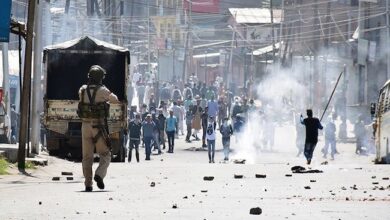Overcrowding and a pandemic: The dangers of being a refugee at Moria

As COVID-19 continues its spread around the world, few populations are more vulnerable than refugees. Even under the threat of a pandemic, various nations are at war, and civilians are unfortunately caught in the crossfire. Many of those citizens are forced to flee their home countries, becoming refugees in a foreign land.
And while, by definition, refugees rarely have it easy, the COVID pandemic has made life even more dangerous and uncertain for those displaced by war, such as refugees from Syria. The Syrian Civil War, which began in March 2011, led to the displacement of 50% of the nation’s citizens within four years. As early as 2015, Syria’s refugee situation was dubbed a “crisis” by various media outlets, as refugees fled to neighboring countries including Turkey, Lebanon, and Greece.
Although it has essentially been overshadowed by the novel coronavirus in the realm of news coverage, the Syrian refugee crisis is a continual problem. Thousands of displaced refugees live in overcrowded, unsanitary conditions, and their future appears bleak. For example, one of Europe’s largest refugee camps, the Moria camp on the Grecian island of Lesbos, was already dangerously above capacity when a fire broke out in September 2020. Moria was destroyed in the blaze, and some 13,000 refugees were affected.
Moria’s refugees now find themselves doubly displaced, as they also fight an uphill battle against COVID-19, in conditions where water and soap are woefully scarce. The United Nations considers basic hygiene and sanitation to be human rights, but that sentiment doesn’t always effectively translate to real-world situations. As it stands, refugees from Moria now find themselves far from home, with few resources, while under the dual threat of a pandemic and volatile geopolitical tensions. It’s a dangerous combination, with serious long-term implications.
The Ongoing Syrian Refugee Crisis
The Syrian Civil War and its subsequent refugee crisis have become a global problem, affecting multiple nations. Recently, numerous European countries including Germany and France have stepped in to help the refugees of Moria, especially the youngest asylum seekers. The European Commission agreed to fund the transfer of upwards of 400 unaccompanied children from Moria to 10 member countries.
But relocation is just the first step in a lengthy healing process for the refugee children of Moria, the bulk of whom may develop some form of childhood trauma or post-traumatic stress disorder (PTSD). Unfortunately, childhood trauma may be overlooked among those young people with more pressing needs, such as shelter, food, and basic hygiene.
Symptoms of childhood trauma can vary widely between individuals but can include irritability, restlessness, aggression, and persistent feelings of guilt and shame. It’s important to note that the effects of childhood trauma can persist for years following the initial traumatic event. In some cases, childhood trauma can even manifest in the form of physical ailments, including heart disease, diabetes, and substance abuse.
Health Concerns Among Refugee Populations
However, the threat of childhood trauma is just the beginning in regards to the negative health effects among refugee populations. The previously mentioned feelings of guilt or shame stemming from a traumatic event such as war or persistent homelessness may also be indicative of a more serious condition known as complex post-traumatic stress disorder (CPTSD). The condition stems from persistent trauma, rather than a single event.
Those who experience CPTSD may experience heightened feelings of anger or sadness, as well as a complete loss of long-held beliefs and difficulty maintaining personal relationships. Yet mental health conditions are only the beginning for many asylum seekers. Refugees at Moria or elsewhere may also find themselves in poor physical health, especially when they lack the basic components needed for proper sanitation, like handwashing.
According to Healthline, proper handwashing is an individual’s best defense against the virus that causes COVID-19. And while the act of handwashing is a simple endeavor on the surface, requiring only soap, water, and approximately 20 seconds, it can be a virtually impossible act for refugee populations. Without consistent access to clean water and soap, refugees are thus at a greater risk of contracting COVID-19.
Curbing the Refugee Crisis, Now and Into the Future
While more nations have opened their borders to Syrian War refugees, there is still an exorbitant amount of work to be done. To stave off the threat of COVID within refugee camps, ensuring access to water and soap must be prioritized. In overcrowded camps, a COVID-19 outbreak is likely to spread like wildfire, putting everyone from refugees themselves to humanitarian aid workers at risk.
Thus, once a refugee camp has reached capacity, the governments of host countries should offer humane solutions in the interest of public health. It may also be prudent for those governments to provide counseling services at refugee camps, alongside basic hygiene supplies including antibacterial soap.
For those fleeing war-torn countries, the psychological effects of terrorism and trauma can last for years. It’s up to the governments and citizens of those countries offering asylum to help ensure that refugees can overcome and heal from the trauma of war.




